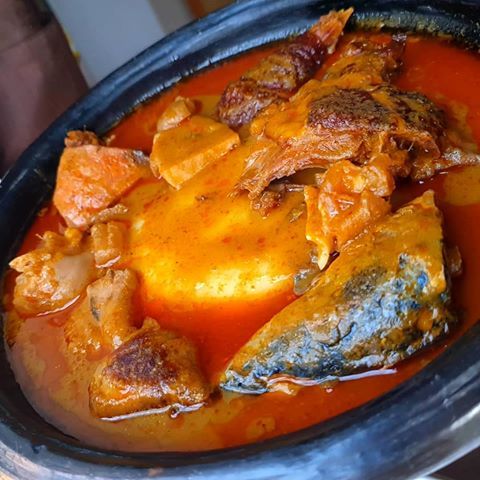
Ashanti Cuisine: Exploring the Rich Flavors and Unique Ingredients of a Proud Culinary Heritage
Food is not only about taste—it is a reflection of history, culture, and identity. In Ghana, few culinary traditions capture this truth as vividly as Ashanti cuisine. Rooted in centuries of tradition, it blends locally grown ingredients, time-tested techniques, and symbolic dishes that define community and celebration. From the steaming bowl of fufu paired with light soup to the aromatic aroma of garden eggs stews and palm nut soup, Ashanti cuisine offers a rich journey into Ghana’s cultural heartland.
A Cuisine Built on Tradition
The Ashanti people, who form part of the Akan ethnic group, have a long history of agriculture, trade, and cultural innovation. Their food culture reflects this heritage, combining staple crops such as cassava, plantain, yam, and cocoyam with a wide variety of vegetables, herbs, and proteins. Meals are more than nourishment; they are a way to preserve identity, pass down traditions, and strengthen social bonds.
For instance, fufu—perhaps the most famous dish associated with the Ashanti—is not simply food, but a symbol of togetherness. It is traditionally prepared by pounding boiled cassava and plantain in a large wooden mortar with pestles, a practice that often brings families and neighbors together. The rhythm of pounding fufu is a sound that resonates in Ashanti households, especially during festive occasions and family gatherings.
The Central Role of Soups
What makes Ashanti cuisine particularly distinctive is its soups, which are not side dishes but the centerpiece of many meals. Fufu, for example, is almost always served with a soup. Light soup, palm nut soup, and groundnut (peanut) soup are some of the most common accompaniments, each with its own cultural significance and taste profile.
Light soup, known for its clear and spicy broth, is made with fresh garden eggs, tomatoes, onions, peppers, and a blend of local spices. It is often enriched with goat meat, chicken, or fish, depending on availability and preference. For the Ashanti, light soup represents comfort, especially when served during times of recovery or after important family gatherings. Its warmth and spiciness are believed to restore strength and vitality.
Palm nut soup, on the other hand, brings out the deep flavors of palm fruit extract. Thick, hearty, and rich in color, it is a dish often reserved for significant occasions, such as festivals and funerals. The soup carries a deep cultural meaning, connecting families through shared meals and marking life’s milestones.
Ingredients that Define the Taste
The richness of Ashanti cuisine lies not just in its preparation but also in its ingredients. The use of fresh, locally sourced produce is central to its authenticity. Garden eggs (a local variety of eggplant), kontomire (cocoyam leaves), and herbs such as prekese (Aidan fruit) provide unique flavors that distinguish Ashanti dishes from others.
Chili peppers play a central role, delivering the spice and heat that characterizes many Ghanaian dishes. They are not only about taste but also about tradition, with spicy food often seen as invigorating and energizing. Protein sources such as tilapia, guinea fowl, goat, and bushmeat further enrich the culinary experience, showing the diversity of local farming and hunting practices.
Food as Culture and Identity
Ashanti cuisine is also intertwined with cultural practices and values. Sharing a meal is an expression of hospitality and unity. Guests are often welcomed with food, and eating together reinforces the communal spirit that lies at the heart of Ashanti society.
Festivals such as Akwasidae and other traditional celebrations feature elaborate feasts, where the full range of Ashanti cooking is displayed. These occasions remind the community of their heritage and reinforce pride in their cultural identity.
A Cuisine Evolving with Time
While traditional dishes remain central, Ashanti cuisine is also adapting to modern life. Urbanization and globalization have introduced new cooking methods and ingredients, leading to variations of traditional recipes. Instant fufu flour, for example, offers convenience for busy households, though many still prefer the authentic taste of freshly pounded fufu. Similarly, lighter versions of soups are being created to suit contemporary health-conscious diets.
Despite these changes, the essence of Ashanti cuisine—its reliance on local ingredients, its emphasis on communal sharing, and its cultural symbolism—remains intact. The cuisine continues to tell the story of a people deeply rooted in their traditions while open to innovation.
Conclusion
Ashanti cuisine is more than just food on a plate; it is a living cultural expression. Through dishes like fufu and light soup, it carries the history, identity, and values of the Ashanti people. It is a cuisine that celebrates the land’s bounty, honors the importance of family and community, and preserves traditions passed down through generations. For anyone seeking to understand Ghana’s cultural richness, a taste of Ashanti cuisine is not just recommended—it is essential.RECOMMENDED ARTICLES
- Akan Day Names: Identity in Every Birth
- Homowo Festival: Celebrating Ga Heritage and Ghanaian Harvest Traditions
- Hogbetsotso Festival: Celebrating Ewe Heritage and Ghanaian Culture
- Damba Festival: Celebrating Northern Ghana’s Rich Cultural Heritage
USEFUL LINKS
